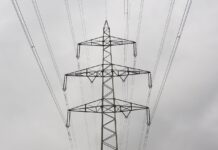Table of Contents - Jump Ahead:
In this article, we will cover some of the basic information about the United States Patent Application process and some of the most common questions we receive. Michael Ahmadshahi, PhD, Law Offices is a nationwide law firm that helps inventors, engineers and regular people file for patent protection under United States Patent Act Title 35 USC. If you or your company needs to file for a patent, (or need to protect your patent against infringement), it’s highly advisable that you seek the advice of our experienced patent lawyers to assist you. Although this article is a brief overview, there is an overwhelming amount of information, rules and regulations that may apply to your unique circumstance.
The First Step: Is Your Invention Patentable?
Over the last 15+ years we’ve spoken to thousands of inventors or companies who have a unique product or process, but only about half can actually obtain a patent. There’s numerous reasons for this, but the most common reasons a patent is denied are as follows:
- The invention is already patented
- The invention is not unique enough, “novel”, to warrant a patent
- The invention is obvious, or too close to a prior invention
- The patent application was improperly written
All of the above reasons are the most common, but each situation is unique and sometimes doesn’t fall into any of these categories. The United State Patent and Trademark Office has put together a 7-step strategy for conducting a preliminary search of established patents. Before moving forward, we typically recommend checking this resource first.
The Second Step: What Type of Patent do You Need?
There are three main types of patents:
- Utility Patent: This is a patent awarded to someone who develops a new or unique process or manufacturing technique.
- Design Patent: This patent is for someone who invents an original & ornamental design for an article of manufacture.
- Plant Patent: A plant patent is for someone who invents or discovers any new or distinctively unique variety of plant.
The Third Step: Prepare Your Patent Application
Preparing your application is the most time consuming, costly and draining part of the patent application process. This involves drawing up designs, revising your work countless times, preparing the actual application for your type of patent, and making sure that while you are in the middle of this process no one beats you to the patent office. Additionally you can file for a provisional or nonprovisional patent if you are applying for a Utility or Plant patent.
The Fourth Step: Submit Your Patent Application
Once you’ve gone through the lengthy & laborious process of preparing and revising your patent application, it’s time to submit it. All of your drawings, separate parts of your applications, payments and filing fees must be submitted for a patent award to be considered. As mentioned above, this step is one of the primary reasons most applications get denied. The submission process can be very confusing to someone who hasn’t gone through the process, and can be equally frustrating to an attorney who’s practice doesn’t revolve around Intellectual Property Law. We strongly encourage anyone considering a patent application to discuss your intention with one of our well qualified lawyers.
How Long Does A Patent Application Take?
Once a patent application has been submitted, it can take up to 1-2 years to be approved or denied by the USPTO. During this time, your invention will have a “patent pending” status which offers you protection until your patent is either awarded or denied. During this time, you can still begin the process of making, selling or licensing the invention as long as you’ve publicly disclosed all of the elements of your invention in your patent application.
How Much Does a Patent Cost?
The cost of a patent can be as low as $1,000 if you intend to do all the work, research and filing yourself. Once you involve an experienced patent attorney like Michael Ahmadshahi, PhD, Law Offices, the costs can go up to $5,000 – $10,000 (or more) very quickly. The cost difference is mainly due to the amount of work involved in the patent application process, research and complexity of the invention. If it is a fairly simple invention it will require less time, research and technical information to be compiled. More complex inventions tend to take much longer and sometimes require research from other companies to assist in the preparation or support of your application.
Get Advice From an Experienced Intellectual Property Lawyer
Michael Ahmadshahi has 20+ years of experience in dealing with the United States Patent Office, holds 3 patents himself and has helped hundreds of people nationwide on their patent journey. You should call (949) 260-4997 to discuss your options with us today and allow us to lay out a plan that will work for you.

































